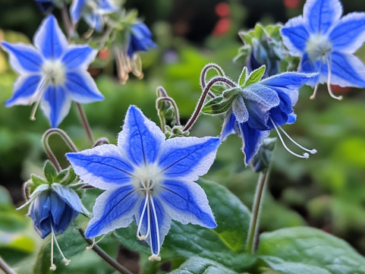In our fast-paced world, the quest for sustainable and efficient food production methods is more critical than ever. Among the various crops that demand attention, celery stands out. With its crisp texture and refreshing flavor, celery is a beloved ingredient in countless dishes worldwide. But traditional cultivation methods can be burdensome, requiring significant resources including soil and ample water. What if we told you there’s a revolutionary way to grow celery that eliminates these requirements and costs nothing? Welcome to the incredible world of soil-less, water-free celery farming!
The Celery Craze: Understanding the Basics
Celery (Apium graveolens) is a versatile vegetable celebrated not only for its culinary uses but also for its impressive health benefits. Rich in vitamins K and C, potassium, and fiber, celery promotes hydration and supports digestion, making it an essential addition to a healthy diet. The celery industry has gained momentum, with the crop being a staple in salads, soups, and snacks. However, traditional farming methods can lead to environmental concerns, such as soil depletion and water scarcity.
The Challenges of Traditional Celery Farming
Before diving into the captivating realm of soil-less celery cultivation, let’s explore the challenges faced by traditional farmers:
- Soil Degradation: Conventional farming often depletes the soil of nutrients over time. Continuous planting of celery in the same soil can lead to decreased yield and a reliance on chemical fertilizers.
- Water Scarcity: Celery is about 95% water, making it a heavy consumer of this precious resource. In regions where water is scarce, celery farming can strain local water supplies and contribute to environmental imbalances.
- Pest and Disease Management: Soil can harbor pests and diseases that threaten healthy crop growth. Farmers often resort to chemical pesticides, which can have harmful effects on the environment and human health.
- Seasonal Dependency: Traditional farming is largely dependent on seasonal changes, making it challenging to grow celery year-round. This limited availability drives prices up, making celery less accessible.
Enter Hydroponics: The Soil-less Solution
So, how can we address these challenges? The answer lies in hydroponics, an innovative agricultural method that allows plants to grow without soil. Instead of relying on traditional farming techniques, hydroponics uses nutrient-rich water solutions to feed plants. This method has several astonishing benefits:
1. Sustainable Resource Use
Hydroponics eliminates the need for soil, which means farmers can grow crops in a controlled environment. Using vertical farming methods or greenhouses can significantly reduce the ecological footprint, making celery farming more sustainable. Since the system recirculates water, this method also conserves water, typically using up to 90% less than traditional farming.
2. Cost-Effective Production
While you might initially think that hydroponics incurs costs, it ultimately turns out to be budget-friendly. Significant expenses associated with traditional farming—such as soil preparation, chemical fertilizers, and irrigation systems—are eliminated. Simple setups that use recycled materials can make this method even more affordable. As a result, growing celery doesn’t cost anything besides time and a little creativity.
3. Reduced Pest and Disease Pressure
Hydroponic systems minimize the risk of soil-borne pests and diseases. By growing celery in controlled environments, farmers can significantly reduce their reliance on chemical pesticides and herbicides. This organic approach not only leads to healthier produce but also protects local ecosystems.
4. Year-Round Production
With hydroponics, celery can be grown year-round, freeing farmers from the constraints of seasonal changes. This means consumers can enjoy fresh celery regardless of the time of year, making it more accessible and affordable.
Starting Your Hydroponic Celery Garden
Ready to ditch the soil and the watering can? Here’s a step-by-step guide to help you start your hydroponic celery garden with virtually no cost.
Step 1: Gather Materials
Creating a hydroponic setup can be as simple or as complex as you wish. Here’s a basic list of materials you can source inexpensively:
- Containers: Recycled plastic bottles, old containers, or even buckets can serve as plant pots.
- Growing Medium: While hydroponics doesn’t require soil, you may need a medium to support the celery stems. Options include coconut coir, rock wool, or perlite.
- Nutrient Solution: Purchase ready-to-use hydroponic nutrient solutions containing essential vitamins and minerals. Alternatively, you can create your own using household items like Epsom salts or fish emulsion.
- Light Source: If you’re growing indoors, consider using LED grow lights to replicate natural sunlight.
Step 2: Set Up Your Hydroponic System
There are several types of hydroponic systems, but for beginners, a simple Deep Water Culture (DWC) system works wonders. Here’s how to set it up:
- Cut the top of your container(s) to create holes for the celery stems to rest. Ensure that the roots can extend into the nutrient solution below.
- Fill the container with a nutrient solution, ensuring it’s oxygenated. Use an air pump to bubble air through the water, promoting root health.
- Add your growing medium around the stems for support.
Step 3: Planting Celery Seeds
Growing celery from seeds requires patience, as germination can take up to two weeks. Here’s how to plant them:
- Moisten your growing medium and place the seeds about a quarter-inch deep.
- Keep the container in a warm, well-lit area or under grow lights.
- Once the seedlings emerge, thin them out to prevent overcrowding, allowing strong plants to grow.
The Impact of Soil-less Farming on the Environment
The move towards soil-less farming, especially hydroponics, holds great promise for the environment. Here are some ways in which growing celery without soil or excessive water can positively impact our planet:
1. Water Conservation
Hydroponic systems generally consume up to 90% less water than traditional farming methods. This conservation is vital in places facing drought and water scarcity.
2. Reduction of Chemical Usage
By minimizing soil-borne pests and diseases, farmers can significantly reduce their reliance on harmful pesticides, fertilizers, and herbicides. This shift promotes healthier ecosystems, benefitting not only the plants but also local wildlife and humans.
3. Waste Reduction
Incorporating recycled materials into your hydroponic system helps reduce waste while promoting sustainability. For instance, utilizing plastic bottles not only repurposes waste but also serves as an inexpensive plant container.
Conclusion: The Future of Celery Cultivation
The journey towards sustainable food production techniques is well underway, and hydroponic farming represents a beacon of hope for both our diets and the environment. Embracing soil-less and water-free celery cultivation not only allows individuals to grow their food seamlessly but also empowers communities to tackle broader environmental challenges associated with traditional agriculture.
So, whether you’re a seasoned gardener or a curious beginner, now is the time to consider diving into the world of hydroponics. With the added benefit of minimal costs, the adventure of growing your own celery can be a rewarding and environmentally conscious choice. Get ready to ditch the soil and watering cans—your sustainable celery garden awaits!
In this article, we have explored the necessity of transitioning to sustainable farming practices in growing celery, highlighting the benefits of hydroponics and the simple steps to create a thriving soil-less garden. As you embark on this journey, remember that every small step contributes to a larger movement toward a greener future. Happy gardening!




